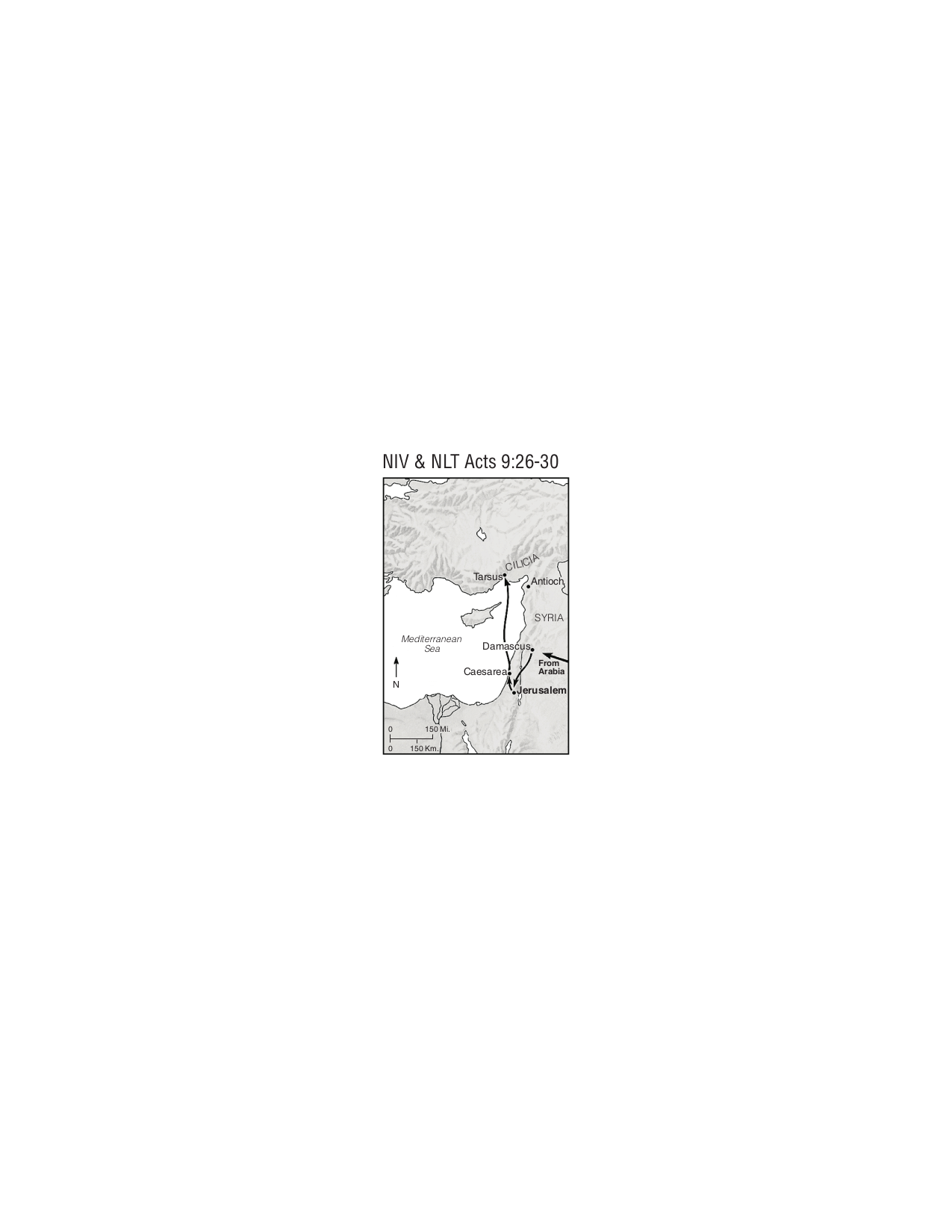
Paul’s Return to Tarsus
After time in Arabia, Paul returned to Damascus, then Jerusalem. After troubles in Jerusalem, he fled to Caesarea, then on to Tarsus.
Open Bible Data Home About News OET Key
OET OET-RV OET-LV ULT UST BSB MSB BLB AICNT OEB WEBBE WMBB NET LSV FBV TCNT T4T LEB BBE Moff JPS Wymth ASV DRA YLT Drby RV SLT Wbstr KJB-1769 KJB-1611 Bshps Gnva Cvdl TNT Wycl SR-GNT UHB BrLXX BrTr Related Topics Parallel Interlinear Reference Dictionary Search
A B C D E F G H I J K L M N O P Q R S T U V W XY Z
TARSUS
Birthplace and hometown of Saul (Paul) and the capital and chief city of the Roman province of Cilicia in Asia Minor. The city is mentioned only five times in the Bible, all in the book of Acts. After Saul’s conversion, the Lord directed Ananias to visit Saul; Ananias was told to ask for “a man of Tarsus named Saul” (Acts 9:11). Then, when Saul returned to Jerusalem and a plot against his life was discovered, the Christians sent him to Tarsus (v 30). When Barnabas was serving in Syrian Antioch and needed help, he went to Tarsus to get Saul to work with him (11:25). On the occasion of Paul’s rescue from the Jewish mob in the temple, the Roman tribune was concerned with Paul’s identity. Paul identified himself: “I am a Jew, from Tarsus in Cilicia” (21:39). In the defense he made before that angry multitude, speaking in Hebrew, he declared, “I am a Jew, born at Tarsus in Cilicia” (22:3).

Paul’s Return to Tarsus
After time in Arabia, Paul returned to Damascus, then Jerusalem. After troubles in Jerusalem, he fled to Caesarea, then on to Tarsus.
Tarsus was situated on the Cydnus River, 12 miles (19.3 kilometers) upstream from the Mediterranean Sea. The plain on which the city was built was very fertile, composed of alluvium carried down from the Taurus Mountains by the Cydnus and several other streams.
Although the river was navigable by small boats as far as Tarsus, the overland trade routes were the most important. Asia Minor was interlaced with roads long before the Romans came into the area. From the east there were two main routes, one of which began in northern Mesopotamia and went on to Carchemish or Aleppo, across the Amanus Pass. The other ran from Nineveh through Malatya and Antioch to the Syrian Gates. These two routes converged near Caesarea, 50 miles (80.5 kilometers) east of Tarsus. During the Roman Empire, “the Old Way to the East” ended at Babylon; coming westward it reached Aleppo, Syrian Antioch, Adana, Tarsus, the Cilician Gates, Derbe, Lystra, Iconium, Pisidian Antioch, Hierapolis, Colosse, Laodicea, Ephesus, Smyrna, and Troas, most of which are well known from the writings of Paul and from the book of Revelation.
Tarsus was an educational center; the university of Tarsus was famous for its scholarship, and Strabo indicated that Tarsus surpassed Athens, Alexandria, and other cities as a seat of learning. The university offered instruction in a wide range of studies; one of its specializations was the philosophy known as Stoicism, with which Paul was familiar. Although Paul does not say that he attended this institution, it has often been suggested that he studied there.
Tarsus was also a center for tent making, a vocation in which Paul had been trained (cf. Acts 18:3). The goats of the cold, snow-swept Taurus Mountains produced long hair that was made into a fabric particularly well suited for tents.
Tarsus has been described as “the heart of the Greco-Roman world” and “a meeting place of East and West.” From such an environment, a man like Saul of Tarsus, at home with Greek and Roman culture and educated at the feet of Gamaliel, was singularly well equipped to bring the gospel to the Jew first and also to the Greek.
See also Paul, The Apostle.